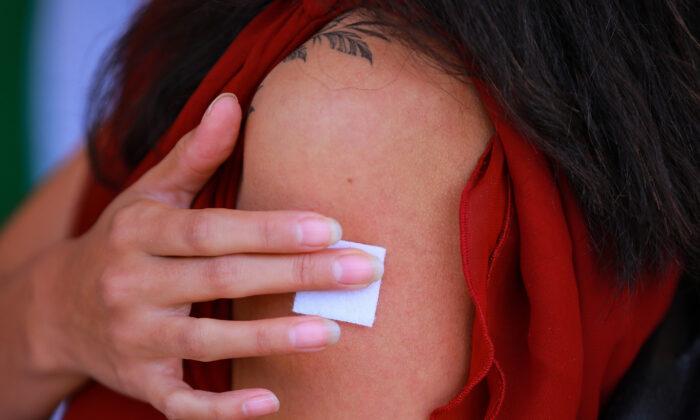Researchers have designed a vaccine printer that can produce COVID-19 mRNA vaccines on the go, as part of the intense effort to get more people inoculated.
“We could someday have on-demand vaccine production,” Ana Jaklenec, a scientist from MIT’s Koch Institute for Integrative Cancer Research said.
“If, for example, there was an Ebola outbreak in a particular region, one could ship a few of these printers there and vaccinate the people in that location.”
There are limitations in the distribution of vaccines, including the infrastructure and expertise needed, such as doctors who can administer the shots, safe needle disposal, and vaccine refrigeration.

“When COVID-19 started, concerns about vaccine stability and vaccine access motivated us to try to incorporate RNA vaccines into microneedle patches,” lead author John Daristotle said.
Microneedle patches contain RNA vaccine molecules—the “ink”—encapsulated in lipid nanoparticles which help them remain stable at room temperature, even in the long-term.
The scientists found the same strong antibody response when they vaccinated mice with microneedle patches that had been stored for up to three months.
The patches can be applied simply by pressing them onto the skin, so no trained health professionals would be needed.
Potential to Print Other Vaccines
Experts said that mobile vaccine printers can help spread RNA vaccines more widely.“With the possibility of scaling up vaccine manufacturing and improved stability at higher temperatures, vaccine printers can facilitate widespread access to RNA vaccines,” Joseph DeSimone, a professor of translational medicine and chemical engineering at Stanford University said.
While the study focused on COVID-19 mRNA vaccines, the team plans to adapt the process to generate other types of vaccines, including those made from proteins or inactivated viruses.
“The ink composition was key in stabilizing mRNA vaccines, but the ink can contain various types of vaccines or even drugs, allowing for flexibility and modularity in what can be delivered using this microneedle platform,” Jaklenec said.
Genetic Manipulation of Healthy Cells
Experts have come out to express concerns that the current technology is a modified mRNA rather than real mRNA, and potential negative consequences are still far from being understood.Molecular biologist and former professor of anatomy and cell biology Klaus Steger said that conventional mRNA teaches cells to create a protein that would initiate an immune response against a specific pathogen.
However, modified RNA-based technology used in COVID-19 vaccines and all vaccines currently in the research and development stages, are gene-based injections that force healthy cells to produce a viral protein, which actually causes a weakening of the immune system.





